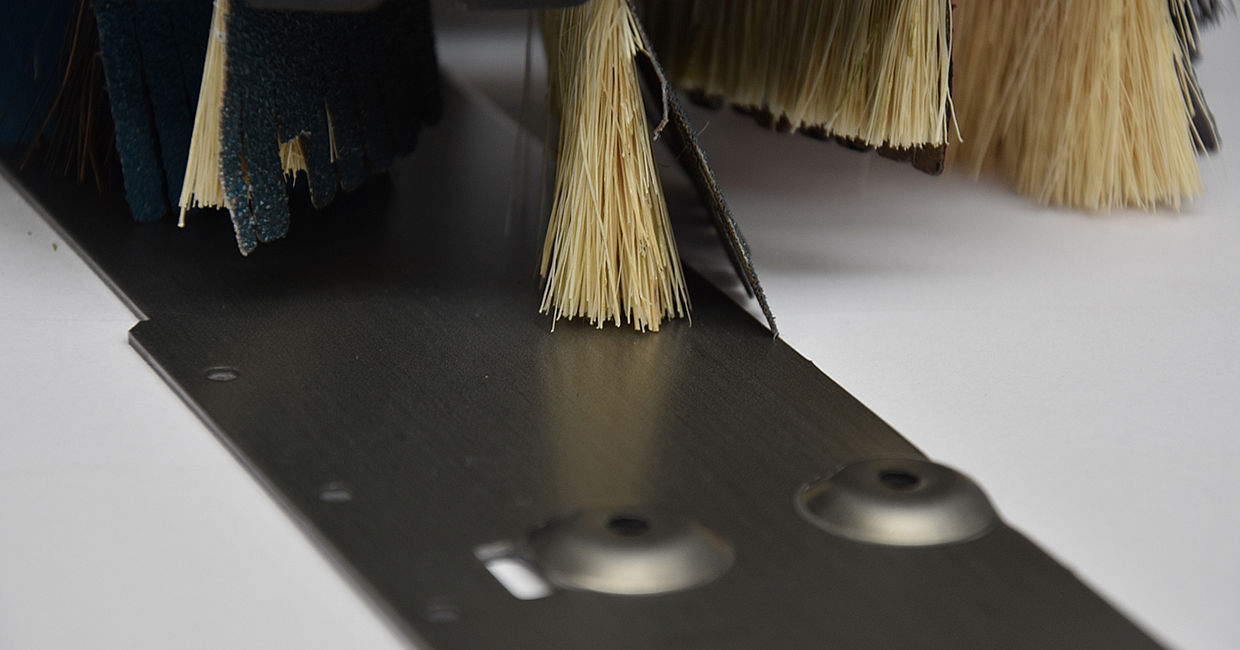If possible, always double-sided!
This is particularly fast with deburring machines that work double-sided. Allowing the parts to be processed from the top and bottom side in just a single pass. Therefore saving more than 50% of the time compared to a single-sided deburring machine. This doesn’t only take into account that parts have to be ran twice, but also in terms of handling the workpieces. The double-sided machine thus saves between 40 and 80 Euros per hour. Indicating that even with just a few hours of usage per week, it can pay off big time. So for economic reasons, the decision is “always double-sided”!
Even if only one side of the sheet metal parts are to be processed, a double-sided deburring machine can still be useful. This may eliminate the need for presorting or flipping the workpieces over. This can be a time-consuming and dangerous task with larger workpieces or heavy flame-cut parts. If – depending on the manufacturing processes – you add investments for additional handling equipment to compensate for a single-sided deburring machine, the expected price advantage can quickly turn into the opposite.
Where is the catch?
But there are also useful applications for single-sided deburring machines. In contrast to double-sided machines, single-sided ones often have a vacuum table as a support. This allows you to securely fix and process even smaller parts that would otherwise “fall through the cracks” if they were to be processed from both sides simultaneously. This makes a single-sided machine interesting for laser job shops for example, since they deal with a large array of different parts.
A supported surface for sheet metal parts by a vacuum table also allows certain rounding processes, for a machine equipped with rotary brushes. The edge rounding process with rotary brushes achieves the best possible rounding results on inner and outer contours, since the brushes make contact with the material from different directions. The processing result is very uniform, regardless of the shape and orientation of the parts. Even a radius of up to 2.0 mm can be achieved with the rotary rounding brushes.
In addition to deburring and edge rounding, machines processing from only one side also allow for a surface finish as a final step. To achieve such, the machines are equipped with a separate unit for surface processing.



